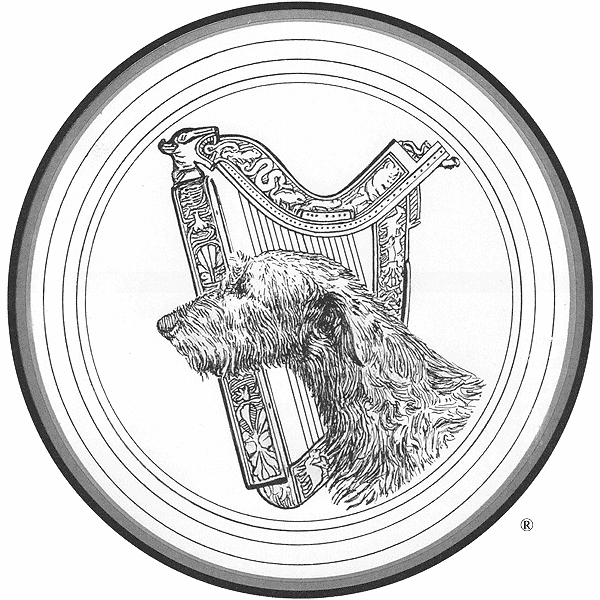Blastomycosis
Blastomycosis becomes familiarly known as "Blasto" to those of us unfortunate enough to have encountered it with our pets. For most, it's a dreaded word, as the survival rate is pretty low. For others who have never heard of it — be glad — but aware.
Commonly misdiagnosed as kennel cough, blasto is generally contracted by sniffing dirt. Yes, it's that simple. Throughout the Great Lakes region, the soil is riddled with a mold which is made accessible by digging or other exposure to recently overturned earth. Throughout the United States and Canada it has other names — Meadow Fever is one. There is no way to know when or where the fungus will be found — or as one emergency vet said to me, "It's just sh#@$%t bad luck". Once a dog sniffs up the mold, it multiplies as yeast within the body with particular affinity for the lungs and eyes.
The first symptom is a small grunting cough, typical of kennel cough. I'd never had a dog with kennel cough, someone in my office heard it and mentioned to me. So I checked in with the vet and got some Cephalexin to treat it. This was towards the end of February. This seemed strange, as Roric had never been kenneled and was current on all possible vaccines, so take that as a first clue. The cough did not get worse and seemed to disappear. Three weeks later, after a long walk, Roric started coughing again, only this time it sounded wet. I'd had several meet ups with pneumonia in wolfhounds, so I immediately called the vet to get my favorite double whammy of Baytril and Clindamycin, which has worked miracles in the past. This was on Monday. By Wednesday, with no improvement, we went to the vet again and decided that IV infusion of the antibiotics would be necessary since the oral didn't seem to be catching hold. A day later and our vet suggested the emergency clinic because Roric's condition was worsening and the weekend was approaching. We went immediately to the largest emergency clinic in northern Illinois, Animal Emergency of Grayslake. As luck would have it, they see most of the blasto cases in the area and immediately did an esophageal wash. Even without the follow-up x-ray they were able to see the cells clearly in a slide stain of the wash. The x-ray clearly showed the distinct white snowflake characteristic of blasto in the lungs.
And then you sit with the vet to get the "news". Which is the part about it being bad luck...and unlikely to get better. The treatment for blastomycosis is an antifungal medication called Itraconozole. Administering a killing dose to overcome the yeast in the lungs (and get ahead of the growth curve) kills 50% of the patients. If they survive the first 3-5 days, you then have about six months daily medication to kill off the surviving yeast, which by this time has sequestered in the liver, eyes, joints and possibly other organs. And, according to the experts, may actually resurface later if the dog's system gets really stressed.
The price of Itraconozole for a 170 lb wolfhound can be as high or higher than $500 per week at your local drugstore. (A nearby pharmacy suggested I only fill 2 days — medicine is not returnable and I guess they'd had a lot of folks come back when their pets didn't make it past 3 days). Then, if you succeed in killing the yeast, the dead cells form a blanket over the inside of the lungs, which will suffocate the patient if the balance of lung cells capable of getting oxygen become overwhelmed.
Roric achieved the impossible. Nobody expected him to make it, certainly not the emergency staff treating him. He stayed a week in critical care, moving to oxygen support on day 3. At one point they had oxygen tubes sewn to the hair by each nostril and were giving him in excess of 8 liters/minute. They double tanked him and opened it wide (the vet said the max was 7 liters but apparently underestimated the wolfhound). He lost 15 pounds that week but was released, gurgling and shaky, to come home.
Then comes the first critical month, where anorexia is present and starvation becomes a danger. They suggested to me that something in the medication causes it, but I believe it's actually just that they are swallowing lots of nasty dead yeast and they are nauseated by it. Eventually this passes even though medication continues for several months. Roric would take two bites of food and turn away. So hand feeding choice bits quickly becomes a way of life to keep weight on. As does getting them up to walk a very small distance every hour or so to make sure they don't drown in liquid in the lungs. Add to that the shower steaming and the chest coupage several times each day to aid the breathing and break up of junk in the lungs. Remember you can't tell your dog to cough it up; time has to do the work. Roric was restricted to walking down the drive and back — about 100 feet — for six weeks. More strenuous exercise didn't come for nearly 4 months.
Recovery was slow but sure after the first month, but it took patience, hard work and frankly lots of money to get there. And we suffered a casualty along the way. One of the first things my vet said to me was, "Don't worry, it's not contagious". And she was wrong. Roric's best friend was our 13 month old kitty Scaramouch. He slept on Roric as a baby and was his constant companion on release from the hospital. Roric lay on the kitchen floor, drooling and hacking up killed and sort of killed yeast. And Mouch stayed under his chin, rubbing Roric's face to make him feel better. Membrane to membrane contact WILL transfer the yeast. Unfortunately in cats, survival is zero. Their sinuses become grossly involved (as CT scan showed), infiltrating the brain and nervous system at an incredible pace, causing irreparable brain damage within 24 hours of symptoms (lethargy) appearing. Not one vet in the area knew of this possibility (and we saw 3 clinics within 24 hours) and none will forget how swiftly and horribly we lost our kitty. One theory would be that cats rarely encounter blasto if they are indoors and if they do contract it outdoors — well nobody ever knows because they die quickly and the cat just disappears. One vet we saw for follow-up x-rays had experienced blasto in a tiger — and it also died.
One other complication is the affinity for eyes. It will cause blindness if not stopped in time. A friend of mine has two poodles who survived blasto but one lost an eye completely. Her dogs were also misdiagnosed with kennel cough, but she persevered and had them double checked so in her case the eye lesions tipped them off. Once medication starts, no further damage to the eyes should occur.
So What Can You Do? Not a thing to stop a beloved pet from encountering this disease. However, there are some brighter spots I can pass along to make survival more likely. If your dog is suspected of having kennel cough, particularly if they haven't been kenneled, get an x-ray right away. The snow flake pattern is unmistakable. Catch it early and possibly avoid the emergency room trauma and costs.
Get your Itraconozole from a reputable compounding pharmacy. A month's worth (120 capsules) will be considerably less expensive than at your local pharmacist. Keep other pets from direct contact with discharges or mucus membrane contact until you can be reasonably sure any yeast coming out would all be dead. (Ask your vet about timing — it could be several weeks) And wash your hands — people get blasto as well. It's not that uncommon among landscapers or avid gardeners and it can kill there too if not treated.
Consider pet insurance. After emergency room visits with previous wolfhounds, I have Roric insured. It doesn't cover it all, but it sure helped.
Under NO circumstances let your pet be anaesthetized while taking Itraconozole. It uses up the same liver enzymes needed to clear anesthesia and could be fatal. At least two weeks after meds finish are needed to clear the system. For recheck x-rays with a wolfhound, I used a nearby horse vet who was willing to take standing x-rays with a field machine.
Footnote: This disease is somewhat rare, so don't be surprised if your local vet doesn't know too much about it. We received treatment from our veterinarian, who is willing to share treatment experiences with other veterinarians.
Originally published 06/10/2008; transcribed 02/24/2014
This page was last updated 06/23/2021.



